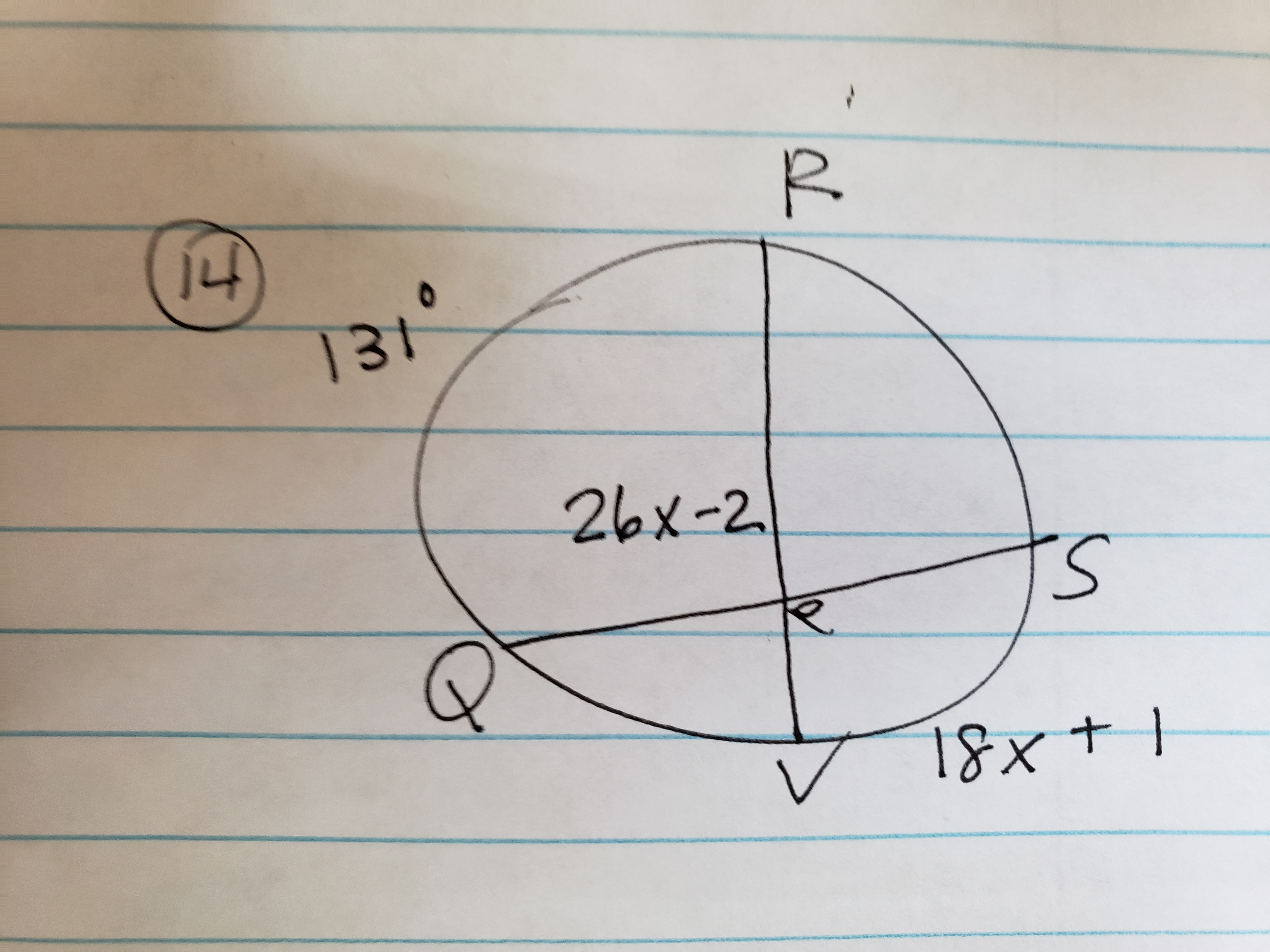
Elementary Geometry For College Students, 7e
7th Edition
ISBN: 9781337614085
Author: Alexander, Daniel C.; Koeberlein, Geralyn M.
Publisher: Cengage,
expand_more
expand_more
format_list_bulleted
Concept explainers
Topic Video
Question
How do I find m<QPR ?

Expert Solution
This question has been solved!
Explore an expertly crafted, step-by-step solution for a thorough understanding of key concepts.
This is a popular solution
Trending nowThis is a popular solution!
Step by stepSolved in 2 steps with 3 images

Knowledge Booster
Learn more about
Need a deep-dive on the concept behind this application? Look no further. Learn more about this topic, geometry and related others by exploring similar questions and additional content below.Similar questions
- Question 22 of 22 > Find the critical points and the intervals on which the function f(x) = (x³ – 4 x) e* + 15 is increasing or decreasing. Use the First Derivative Test to determine whether the critical point is a local minimum or maximum (or neither). (Use symbolic notation and fractions where needed. Give your answer in the form of a comma separated list. Enter DNE if there are no critical points.) the critical numbers with local minimum: the critical numbers with local maximum: (Use symbolic notation and fractions where needed. Give your answers as intervals in the form (*, *). Use the symbol co for infinity, U for combining intervals, and an appropriate type of parenthesis "(",")", "[","]" depending on whether the interval is open or closed.)arrow_forward(b) What are the domain and range of the function y = f(x + 2)? (Use symbolic notation and fractions where needed. Give your answers as intervals in the form (*, *). Use the symbol ∞ for infinity and the appropriate type of parenthesis "(", ")", "[", or "]" depending on whether the interval is open or closed.) D = R =arrow_forwardX ~ Exp (1/9.848) 1) Find P(X<12) 2) Find P(8<X<14)arrow_forward
- Find the transition points. y = 10x³ + 240x² (Use symbolic notation and fractions where needed. Give your answer in the form of a comma separated list) X = Find the interval(s) of increase. (Use symbolic notation and fractions where needed. Give your answer as interval(s) in the form (*, *). Use the symbol co for infinity, U for combining intervals, and an appropriate type of parenthesis "(", ")", "[", "]" depending on whether the interval is open or closed. If the interval does not exist, enter Ø).arrow_forwardSuppose that f has a domain of [5, 13] and a range of [6, 16]. (a) What are the domain and range of the function y = f(x) + 2? (Use symbolic notation and fractions where needed. Give your answers as intervals in the form (*, *). Use the symbol ∞ for infinity and the appropriate type of parenthesis "(", ")", "[", or "]" depending on whether the interval is open or closed.) D= R =arrow_forward03(1-)(4.3) %3D O = (-)(x + 3) %3D O = (*)(* - 3) %3D Write the expressions for (g-h)(x) and (g+h)(x) and evaluate (g-h)(-1). Suppose that the functions g and h are defined for all real numbers x as follows.arrow_forward
- Give the domain for g(x)=x+4/x^2−9x+20 in interval notation. __________arrow_forwardStock Prices A random sample of stock prices per share (in dollars) is shown. Find the 80% confidence intervals for the variance and standard deviation for the prices. Assume the variable is normally distributed. Round the sample variance and final answers to three decimal places. 7.50 75.37 12.00 28.37 13.88 26.69 14.75 46.12 10.87 40.25 60.50 28.00 28.25 6.94 45.12arrow_forward
arrow_back_ios
arrow_forward_ios
Recommended textbooks for you
 Elementary Geometry For College Students, 7eGeometryISBN:9781337614085Author:Alexander, Daniel C.; Koeberlein, Geralyn M.Publisher:Cengage,
Elementary Geometry For College Students, 7eGeometryISBN:9781337614085Author:Alexander, Daniel C.; Koeberlein, Geralyn M.Publisher:Cengage, Elementary Geometry for College StudentsGeometryISBN:9781285195698Author:Daniel C. Alexander, Geralyn M. KoeberleinPublisher:Cengage Learning
Elementary Geometry for College StudentsGeometryISBN:9781285195698Author:Daniel C. Alexander, Geralyn M. KoeberleinPublisher:Cengage Learning

Elementary Geometry For College Students, 7e
Geometry
ISBN:9781337614085
Author:Alexander, Daniel C.; Koeberlein, Geralyn M.
Publisher:Cengage,

Elementary Geometry for College Students
Geometry
ISBN:9781285195698
Author:Daniel C. Alexander, Geralyn M. Koeberlein
Publisher:Cengage Learning